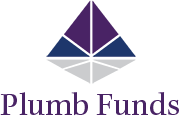
We believe stocks are the best leading indicator for the economy, not the other way around. Valuations don’t cause or predict market corrections.
DOWNLOAD A PDF PRINTABLE VERSION
What is your current view of the stock market?
Prior to this current run, the longest uninterrupted bull market in American history for the Dow Jones Industrial Average ran from the end of 1948 until mid-1962. Today, we are daily setting a new record for the longest period without a twenty percent pull back for the S&P 500. In the fifties, the bull market started as we came out of the post war recession. At that time, ten-year treasuries had a yield below the dividend yield of S&P 500. The only other time that this occurred was at the start of the current bull market run coming out of the financial crisis.
Tell us about your outlook.
The best indicator for the stock market peaks have been an inverted yield curve or a drop in the Purchasing Managers’ Index (PMI) to below 50. Talk of an inverted yield curve or tending toward one has never been tied to a peak.
It happens after the actuality, not in anticipation. And though all peaks followed an inverted yield curve, not all inverted yield curves have led to a peak.Of course, there is no perfect indicator, even valuations don’t portend bear markets. Right now, we are yet to see an inverted yield curve. As of August 24, 2018, the 2-year Treasury Bill yield at 2.63% is still only at 93% of the ten-year yield at 2.63%, and the three-month is about 74% (2.09% vs. 2.82%).
PMI is still well above 50, ending July 31, 2018 at 58.10 and holding strong in the US and Europe, but week in emerging markets.
What kinds of companies do you favor?
When we think about the most successful entrepreneurial businessmen or women, we find they’ve identified or helped drive disruptive secular trends. They’ve ridden the wave of products or services that enabled a trend or profited from a particular disruption. They tend to create profitable business models that benefited from dynamic growth that drove economic expansion, often with some type of recurring revenue stream. Not many of them identified and churned deep value assets that were in a secular downdraft. We favor investing like these business titans.
Two dynamic disruptive fields that, in our opinion, have long legs ahead of them are financial transaction technology and healthcare innovation.
Who do you like in the financial sector?
We believe Financial transaction ease and security is a driving force for worldwide economic growth. Recently, I stopped into a Starbucks at the University of Minnesota campus and ordered three drinks for $15. I put down a $50 bill and was told that they don’t take that. The same day, I read that the Watch House Café in Washington DC decided to stop taking cash for security and efficiency reasons. If you would have told me five years ago that I would be using my VISA card to pay for fifteen minutes of parking in downtown Madison, jokingly I would have asked you about our holdings in Canadian marijuana companies.
In the United States, about 9% of transactions between individuals and businesses are done through mobile devices. In China, it’s about 23% by last count. This has been growing geometrically worldwide. Alibaba has 900 million mobile device users and has shown revenue growth exceeding Amazons’ in 19 of the last 20 quarters while the stock has stagnated over the last year. PayPal boasts over 200 million users. As most of us experience, VISA and MasterCard are often the middleman between our transactions and our bank accounts. In this realm, VISA is the king, with over $20 billion in revenues estimated for this September fiscal year and trading at 27 times next twelve months earnings. MasterCard is about two-thirds international and trading at 29 times forward earnings; currently the faster grower at a slightly higher multiple. Both companies are showing consistent revenue growth in the high teens plus with an asset light model, recurring revenues and 40% net profit margins.
Who do you like in healthcare?
In healthcare, any middle-aged male facing prostate surgery prays that they are eligible for the da Vinci Robotic Surgery System from Intuitive Surgical, Inc. The procedure is less invasive with less discomfort than traditional procedures and demand has been thriving. The company’s revenue is now 51% service and disposables with an installed base that has been growing. This mimics the classic razorblade model, where recurring revenues result from the sale of the initial product.
What suggestions do you have for investors?
In this environment, we think there are still some compelling investment opportunities. Stocks are a bet on the future and historically, over the long-term, have helped many investors build wealth. Even if a correction doesn’t happen relatively soon, investors should regularly revisit and rebalance their portfolios to match changing time frames and their ability to tolerate a normal correction that might take a couple of years to recover from.
In other words, no matter what the euphoria is today or in the future, most investors don’t want to find themselves in a position where they might have to sell equity assets when markets are depressed. That is why the Plumb Funds offer both the Equity Fund (PLBEX) and the Balanced Fund (PLBBX), where rebalancing is done for our shareholders.
For investors who don’t need cash, we believe stocks are a good option. To strive to optimize the risk and return trade between stocks and bonds, we suggest a balanced approach. It’s always important to review what you own and why you own it, being careful not to get caught up in emotion.
Thomas G. Plumb is the founding principal of Wisconsin Capital Management, LLC (formerly Thompson Plumb & Associates), which began in 1984. In addition to his roles with the Funds, Tom maintains an ownership interest in and serves as the president of SVA Plumb Financial, LLC, an affiliated entity.Tom formerly was the lead portfolio manager of Dreyfus Premier Balanced Opportunity Fund. He earned a bachelor of business administration from the University of Wisconsin-Madison in 1975, is a member of the Madison Investment Management Society and holds the Chartered Financial Analyst designation.
Important information
Opinions expressed are those of the speaker as of August 27, 2018 and are subject to change, are not intended to be a forecast of future events, a guarantee of future results, nor investment advice.
Click here for holdings and most recent quarter-end performance for the Plumb Equity Fund.
Click here for holdings and most recent quarter-end performance for the Plumb Balanced Fund.
Fund holdings are subject to change at any time and should not be considered a recommendation to buy or sell any security. References to other mutual fund products should not be interpreted as offers of those securities.
PE multiple: Measure of how expensive a stock is. Formula: Price of a share ÷ Earnings per share.
PMI Purchasing Managers’ Index: An indicator of economic health for manufacturing and service sectors. The purpose of the PMI is to provide information about current business conditions to company decision makers, analysts and purchasing managers.
Forward Earnings: Forward earnings are an estimate of a next period’s earnings of a company, usually to completion of the current fiscal year and sometimes of the following fiscal year.
The Dow Jones Industrial Average (DJIA) is a price-weighted average of 30 significant stocks traded on the New York Stock Exchange (NYSE) and the Nasdaq. The Standard & Poor’s 500, often abbreviated as the S&P 500, or just the S&P, is an American stock market index based on the market capitalizations of 500 large companies having common stock listed on the NYSE or NASDAQ.One cannot invest directly in an index.
CATEGORIES
SIGN UP FOR THE PLUMB LINE
STAY UP TO DATE ON OUR CURRENT INSIGHTS AND PORTFOLIOS.
